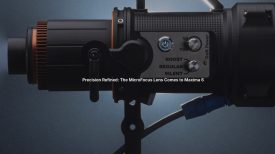I’m sure that most shooters who frequent this site would love to own a set of expensive cine primes. The lucky ones of you – like Mr Allard and Mr Chung – actually have some. Perhaps more commonly owned are stills lenses from the likes of Canon, Sony, Panasonic, Zeiss, Sigma, Tokina and others. These are cheaper than cine lenses but not exactly inexpensive either. But what if you have virtually no money for glass? Perhaps you are a student or someone just getting into shooting, or perhaps you have fancy lenses but want another creative option. Then maybe it’s time to take the budget lens challenge…
Find a workable set of lenses that cost no more than £40 (approx $60 US) each. That is the challenge I set myself. The optics needed to be adaptable to my cameras and give me a range of different focal lengths and looks.
The idea came about when I was testing out the JVC LS300 last summer. With its micro 4/3 mount and Super35 sensor it was well suited to having adapted lenses fitted to it. Dan Chung offered to lend me a selection of old manual lenses that he’d picked up from charity shops and used camera dealers for between £5 and £10 each. Initially I was skeptical, but after playing around with some of them I found the glass to be of a remarkably high quality. I was impressed with the unique looks of each lens and the smooth manual focusing that performed well when filming.
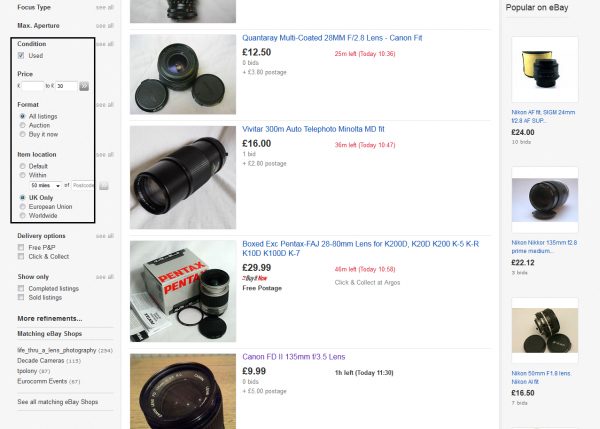
After playing with Dan’s lenses I decided to try to buy a complete set of my own. I started to shop for interesting budget lenses. Dan had been luckier finding cheap lenses in charity (thrift) shops local to him. I kept visiting my nearby shops but wasn’t as lucky finding good quality budget lenses – even so, it’s well worth a look. I had more luck on eBay. A few years ago you might have been able to get a full set of Contax, Canon FD or Olympus fast lenses for not much money, but that ship has sailed and prices for many of these are sky high. These days you need to be a bit less fussy and go for brands that aren’t exactly household names. After several weeks of patient searching I was really happy with what I managed to buy. I had focal lengths from 19mm to 210mm covered, none for more than £40.
Here are the lenses I picked up:
Cosina 19-35mm F/3.5 £34 Contax fit (with CY to EOS adapter)
Lenmar 28mm F/2.8 £15 Minolta MD fit (with MD to EOS adapter)
Soligor 135mm F/2.8 £28 M42 fit (with M42 to EOS adapter)
Super Paragon PMC 200mm F/3.3 £22 Contax Yashica fit (with CY to EOS adapter)
Tamron 80-210mm F3.8-4 Nikon AI fit £10 (with Nikon AI to EOS adapter)
Yashica 50mm F/2 £10 (with CY to EOS adapter)
Each of the lenses have their good and bad points; some have better mechanics than others, some are softer and some have more flare or aberrations. They all have different filter sizes. But at the price there is little to complain about. The lowest price lens I have in the regular kit bag is a £300 Samyang VDSLR lens, but the exercise has taught me that you can still get a range of glass with varied focal lengths and fast apertures for much less.
Of course, buying the lenses is only half the story. The lenses need to be adapted to fit onto your camera. Luckily, there are lots of Chinese-made lens adapters that are available on Amazon or eBay for low prices.
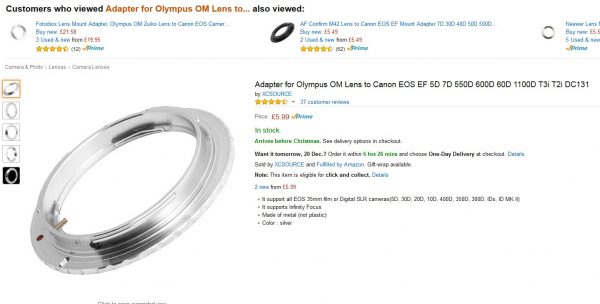
Once the set was assembled I went out and shot the short test at the start of this article. The LS300 had to be returned so the video was shot on my Sony a7S. This had the advantage of being full-frame, taking full advantage of the wider lenses. Each lens was adapted to EOS first, then mounted to an EOS to E-mount adapter. (In the ideal world you would mount each lens directly to E-mount with an adapter but I have standardised on EOS because I work with multiple makers cameras).
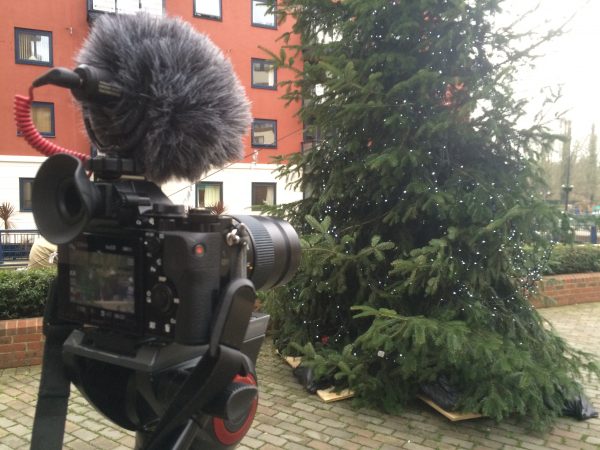
As it was near Christmas, I headed to the nearby market in Kingston to capture the festivities, hoping that the lenses would add a unique look to the lights and colours. The a7S was in a Movcam cage with a Rode VideoMicro for audio straight into the camera. For a tripod I had the trusty Manfrotto 755CX-3 and the whole kit packed into a Manfrotto Backpack-35 PL.
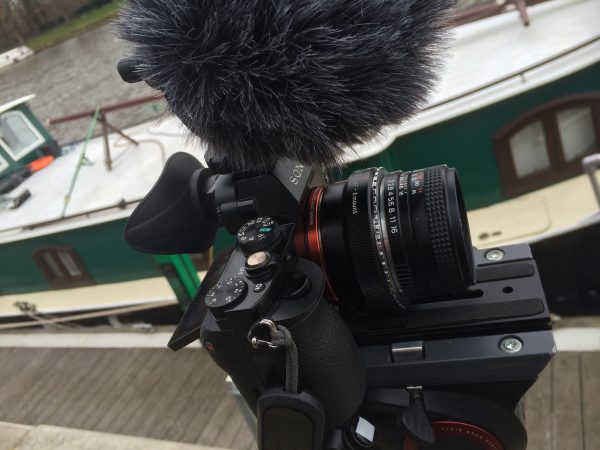
As visual tests go, this was a much more ‘get out there and shoot’ test than a lab one. I’m pretty confident that none of these lenses technically matches a modern pro lens. That’s not the point and testing them the way we test new lenses today just wouldn’t make sense. Old manual lenses have unique characteristics, partly due to design and glass used, partly due to age. These characteristics can give the picture a different look, very different to the clean and sharp images from a newer lens. What I was looking for was nice bokeh and interesting flares combined with reasonable sharpness. Colour representation is of course different between the lenses and had I had a slightly bigger budget I might have tried to get a complete set from one maker to better try to match them. But maybe that’s another blog post for a different time.
Even though the video is not a scientific test you should get a sense of the sharpness, colours, haze, flares and aberrations of the optics. I’ll let you be your own judge of whether or not what I put together constitutes a usable set of lenses.
Here are my thoughts on each lens after spending a day filming with the lenses:
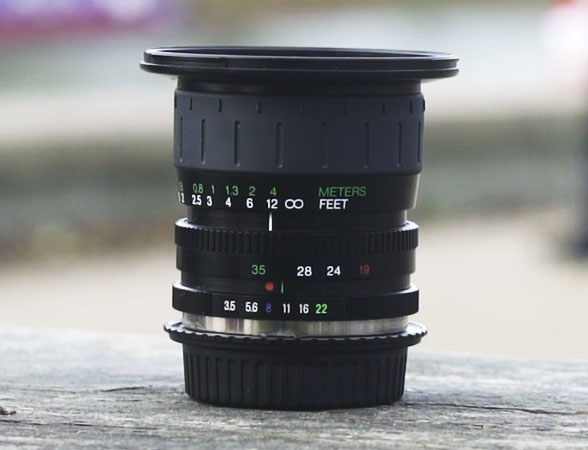
The Cosina 19-35 has cool looking bokeh and lens flare. It performs much better at moderate apertures and at the wider end of the range. At f8 at 35mm it isn’t so pretty. As expected, the image is soft at the edges at all focal lengths, and worst at 35mm. This lens is probably the newest of those tested here and the level of construction isn’t as good as the others. It’s hard to focus while running and gunning. But if you want a no budget ultra-wide angle with minimal distortion then this is it. It’s no Zeiss 21mm f2.8, but at the price who can complain? Incidentally, you might not have heard of Cosina, but they are actually one of the better established lens makers in Japan. They make the modern Voigtlander lenses and also build lenses for other better known brands.
Next up, the Lenmar 28mm was in fact the worst performing lens of all. It’s a Minolta MD fit and I had to use it with an optical MD to EOS adapter which degrades the image compared to the other pure adapter rings. The combination was hard to focus and I ended up shooting at a smaller apertures around F/8 to F/11 to get a usable picture. I wouldn’t recommend this combination and there are other low budget 28mm lenses you could consider instead.
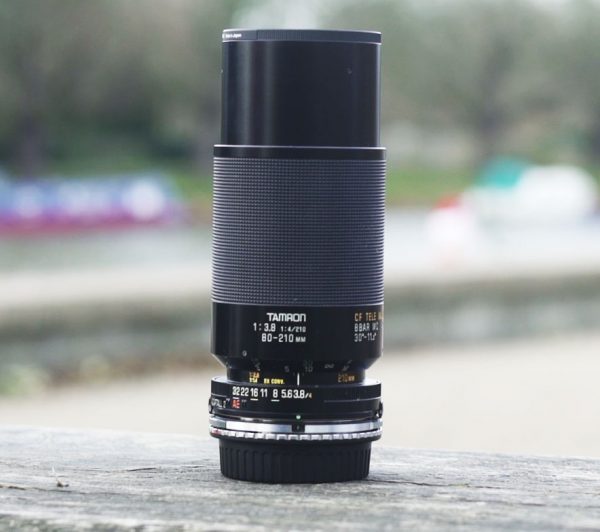
At the telephoto end of things I was surprised with the performance of the Tamron 80-210mm. Some chromatic aberration was to be expected, but it wasn’t too distracting. Zooming with this lens is a push-pull affair instead of the more common two-touch design favoured by videographers. This can make holding focus a little tricky if the zoom moves accidentally. Having this range somewhat satisfying though. For a zoom lens at the price it has very good clarity and sharpness.
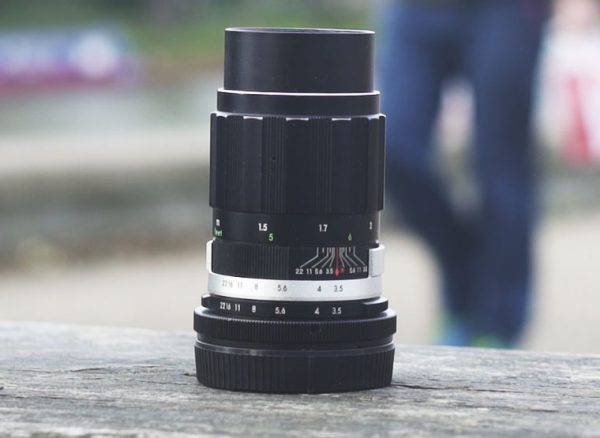
The Soligor 135mm had the best look out of all the lenses – even though it is probably the oldest. It was very sharp with little chromatic aberration. Without the lens hood it had lots of flare. It might not be to everyone’s taste but I felt this actually added to the texture of the picture. Overall, it’s a lovely lens for isolating your subject without breaking the bank.
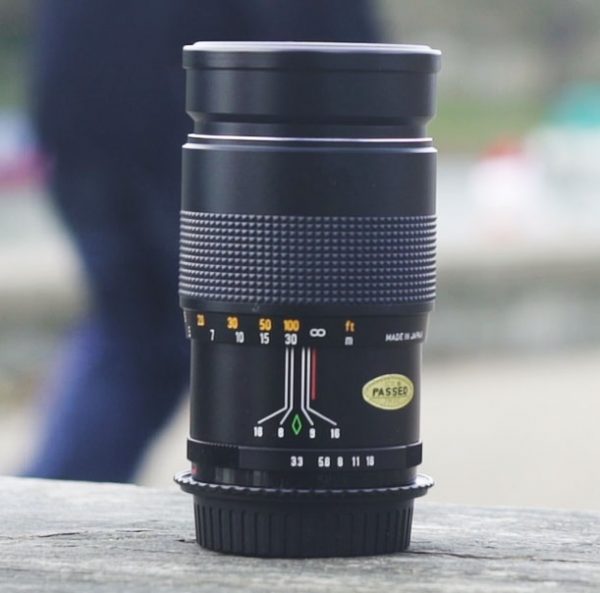
The Super Paragon 200mm was another excellent performer. You might expect a cheap telephoto lens from a little known brand to be very soft wide open at f3.3, but to my surprise I preferred the image from this to my modern Sigma 70-200mm f2.8 zoom. The 200mm focal length means you do need some distance from the subject, but with that in mind I was able to get some very pleasant results.
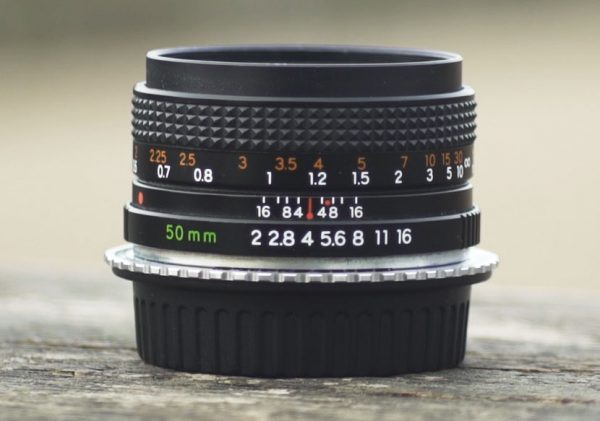
Lastly, the Yashica 50mm worked fantastically. Yashica stopped making SLRs years ago but back in the day they made some very high quality gear. Like all 50mm lenses it is a great default optic to keep on the camera when wandering around. At f2 the picture was a little washed out, but stopping down improved the image. I would use the lens at f4 or f5.6 for maximum sharpness and best colour rendition. As an all-rounder, you can’t go wrong.
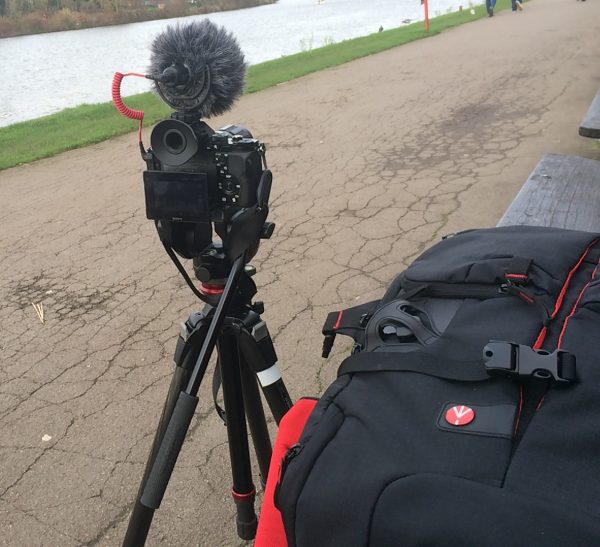
Without image stabilisation these lenses need good support. A good tripod or a well balanced shoulder rig is the order of the day. I shot slow motion at 50fps to try and alleviate any shakiness, but found I still needed a tripod. In that sense these bargain basement lenses have something more in common with top end cine lenses than the latest image-stabilised stills ones.
The focal lengths that I assembled worked well, but you could actually get away with just a wide angle, a portrait and a telephoto lens. You should be able to get your hands on a reasonable quality used 24mm, 50mm and a 85 or 135mm for less than £100. This trio can cover most of the angles, apertures and compositions I routinely need to use.
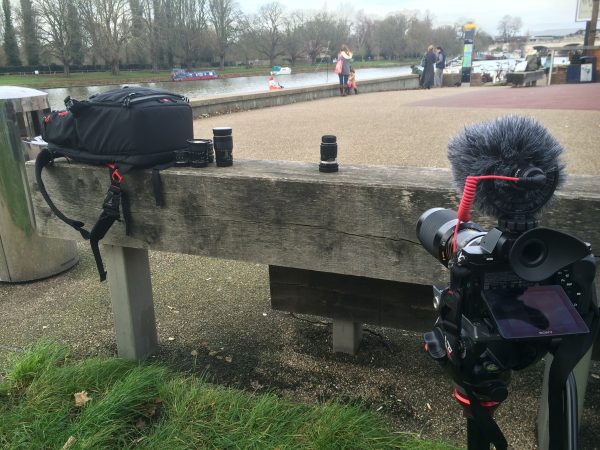
So far, so good then. My budget lenses are working far better than I had thought. I need to do more testing but the initial results are promising and the end result cuts together pretty well, all things considered. We all love to have the best gear, but even when you are counting your pennies you can still achieve some great results. I hope to let you know how I get on as my experiment continues.
Some tips for finding and using budget lenses –
1. Don’t overspend and have patience. The right budget lenses are out there. It’s all about biding your time and waiting for the right price. Don’t get sucked into overpaying because you just had to have that one lens you saw on eBay.
2. The widest aperture lens isn’t always the best bet. Good older fast lenses are usually expensive these days (sometimes more than their modern day counterparts) and often not that great wide open anyway. Unless you’re filming constantly in low light, or want super shallow depth of field, then going for a slightly slower lens is usually a better option when you are on a budget. Settle for a 35mm f2.8 or 100mm f2.8 instead of an f2.0 version. If you do then you might be surprised to find there are even some big name options around at bargain basement prices.
3. If you can, then stick to a particular maker’s lenses. In general this can make matching look and colour easier. Then again, on a super low budget, it isn’t that easy, as I discovered.
4. Don’t go for lens mounts that require expensive adapters. Check that you can get a cheap adapter for the lens you want before you buy it.
5. Not all lenses can be adapted to all cameras. Make sure that the lens you want actually works on the camera you have. In general, Sony E-mount and Micro 4/3 are the easiest to adapt to, with the greatest compatibility. Native EOS or Nikon mount cameras have far fewer lens options.
6. Cover your bases with a range of lenses. Get optics to cover your wide, mid and close up shots, which are the main shots you’ll be capturing.
7. Watch for the direction of focus. Some lenses focus the Canon way, others the Nikon. Usually you can get used to one or the other, but swapping between different focus directions when you change lenses can be tough on the brain. Better to stick to one direction for all your lenses.
8. Old lenses are, well, old. Look out for fungus, stiff focussing, sticky aperture blades, separated lens elements, chips, scratches and coating marks. If you can, try to test them before buying.
9. Try to limit the number of different filter sizes. The fewer you have the fewer filter adapter rings or filters you will need. Also watch for lenses that have a rotating front barrel. If the lens barrel rotates when focussing then it makes using a variable ND filter nearly impossible and you will need a range of fixed NDs instead. If your camera has built-in ND then you can disregard this.
10. Learn the lenses characteristics. Some are more desirable than others. Some have strange lens flares or softness, others are technically better but perhaps a bit characterless. Knowing the advantages or disadvantages of each lens will help greatly when you get out to film with them.



